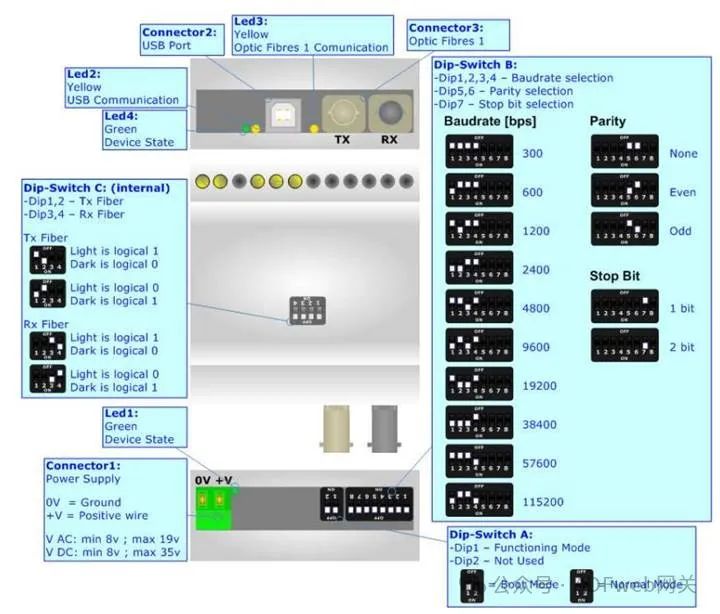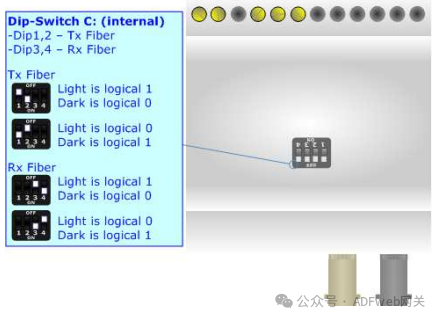RS232-RS485-USB to Fiber Optic Signal—Gateway Converter–HD67072
Author: Zou Wuyi Mobile185-020-77899 Email: [email protected]
1 Product Features:
- The standards can be mixed and matched, allowing RS-232 devices to connect with RS-485 devices, or USB devices to communicate with RS-485 devices, or RS-232 devices to communicate with USB devices through replacement converters and isolators.
- Fiber optic lines are inherently resistant to EMI/RFI (electromagnetic interference/radio frequency interference) and transient surges, making them ideal for data communication near heavy electrical equipment or in environments with electrical or radio interference.
- Typically, the “idle state” (logic 1) is the state where the fiber optic is emitting light, which can also be reversed through the converter, making the “idle state” (logic 1) the state where the fiber optic is not emitting light.
- These devices have the following features:
o The baud rate on the copper cable (RS-232/RS-485/USB) side and the fiber optic side can be selected via dip switches and kept consistent;
o Can be mounted on a 35mm DIN rail;
o The baud rate, parity, and stop bits for the serial port (RS-232/RS-485/USB) and fiber optic can be changed via dip switches;
o Industrial temperature range from -40°C to 85°C.

2 Fiber Optic Function: By operating the “dip switchC”, you can select the logical states 0 and 1 for the transmit (Tx) and receive (Rx) ends of each fiber optic. This dip switch is located inside the device, so the top cover must be removed to operate the switch. Typically, the “idle state” (logic 1) means that the light in the fiber optic is on, so dip switches 1 and 3 should be set to off, and dip switches 2 and 4 should be set to on (this is also the factory setting). It can also be reversed so that the “idle state” (logic 1) corresponds to the light in the fiber optic being off, in which case dip switches 2 and 4 should be set to off, and dip switches 1 and 3 should be set to on. Different states can be set for the two fiber optics. The fiber optic connector must be of the ST type; the fiber type must be 62.5/125µm multimode fiber. The maximum length of the fiber optic is 2000 meters (1.24 miles). The data transmission rate of the fiber optic is the same as that of the copper cable (RS232/RS485/USB).
